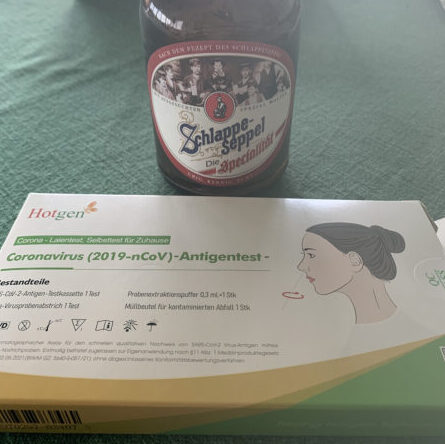
This is not a 2020 German vintage report.
But I’ve tasted a lot of the damn wines, from grower samples beginning way back in March to the normal releases coming as they come, and I wanted to share some thoughts.
After being unable to travel for 2+ years, I was also finally able to get back to Germany this August. John and I went together and we felt, I think, beyond giddy and also a bit guilty. Traveling during COVID, even when vaccinated and testing regularly and being careful, is a risk. We both have young children and the thought crosses one’s mind, in the quiet of the night: “Is all this shit, this risk, worth it… to taste some grape juice?”
And then, during the day, with the holy nectar of Germany in your glass and your friends (the growers) at the table with you, you can’t help but feel: “Fuck yeah this is worth it!” I think John and I had to remind ourselves that in fact this is a job, and we do pay our mortgages (somehow) by doing this and, well, it’s been two years. Anyway, we were as safe as we could be, there were no scares and no positive tests, but I think we both felt a bit like two children who had stolen some cookies from the cookie jar. Maybe we shouldn’t have done it… but damn them cookies are delicious. (Traveling and tasting Riesling during COVID requires a lot of beer and many COVID tests, photographed above.)
Tasting with the growers again was of course glorious; I learned more from the first 10 minutes of the first appointment than I had learned in two years of tasting alone in my kitchen, that much is certain. Still, I’m really not sure I have a full grasp on 2020. I’m honestly not prepared to come out and say anything dramatic, so those of you looking for the buying green light or the red light will unfortunately get something more like the flashing yellow light, which I think means something like, “pay attention.”
Have no doubt: There is some serious delight to be had in 2020, and there is some serious potential too.
But let’s begin in the Mosel, why not. Here’s a line, written by the fine gentlemen of Mosel Fine Wines: “2020 is all about filigreed ripeness with some stunning wines with a lightness and finesse not seen in a decade.”
Read it again: “lightness and finesse not seen in a decade.”
For the purists, in many ways, 2020 is a vintage in the Mosel that offers us exactly what we truly, truly love about German wine. (Or, at the very least, it offers what we say we love about German wine.)
Add to it that most of the bottles are right here, right now, available and often at a lower price than last year thanks to the elimination of the absurd tariffs. It seems to me worth noting, the 2020 vintage is, in fact, relatively un-hyped in the same exact way that some of the best vintages of the last 20 years have been un-hyped, which is both curious, amusing and compelling. If you, like me, have a reflexive dislike of the exact spot where everyone seems to want to run to, then the fact that 2020 has been so coolly received makes me feel like maybe we should pay extra attention? (Remember our flashing yellow light.)
Mosel Fine Wines writes: “2020 made for plenty of stunningly playful and elegant wines which are a far cry from the concentrated and ripe wines of recent vintages. At their best, they have a lightness which we have not seen in the region since 2008, 2004, and 2002.”
That trio of vintages – 2008, 2004 and 2002 – should make the hair on the back of your neck go up a bit; these are the featherweight vintage rock stars of that decade. (Below, the view from the terrace of Stein’s 19th century hotel – one of my favorite views in the Mosel and among my favorite places in the world.)
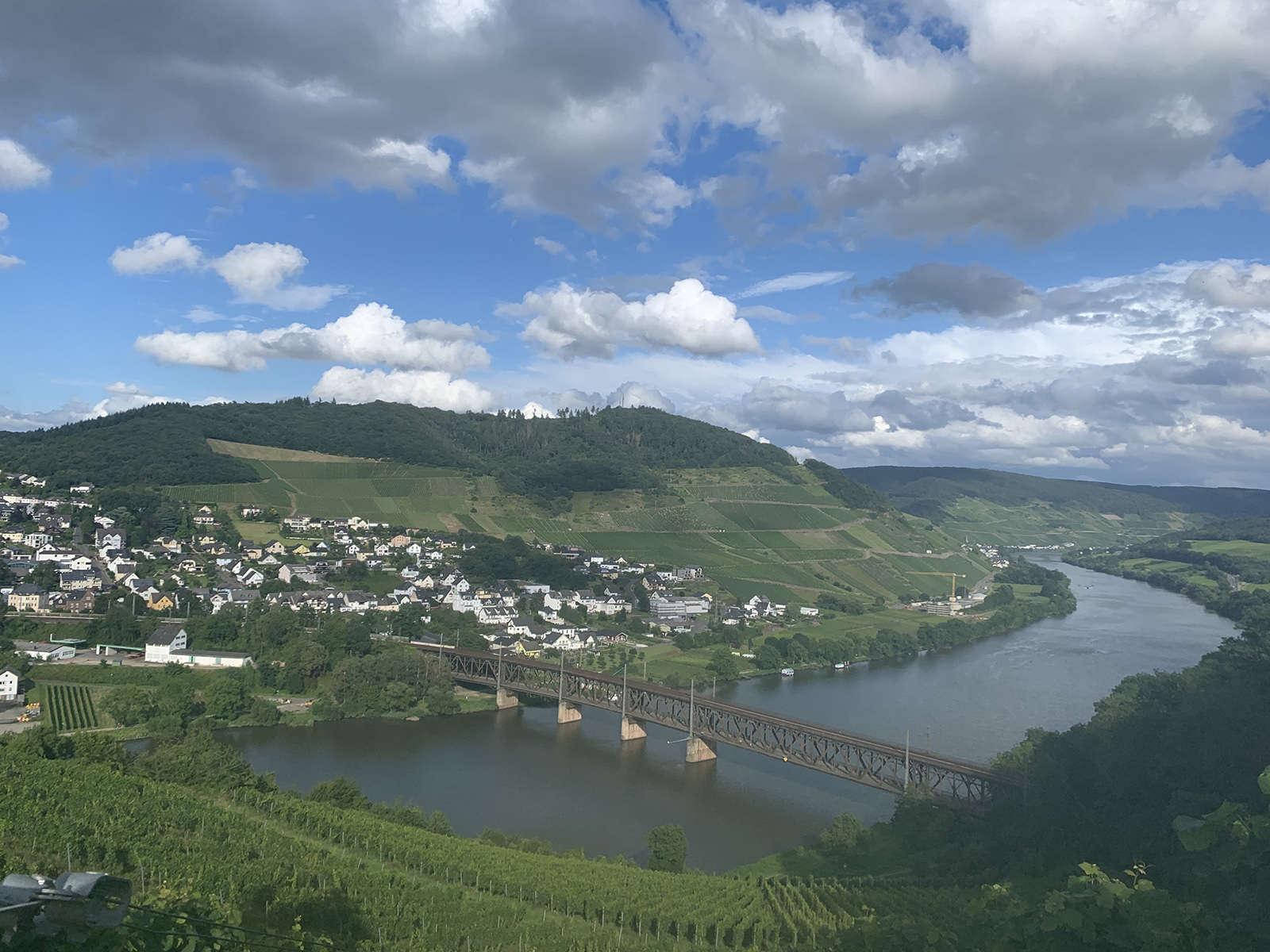
These are the “classical” vintages, at first overshadowed by the superstars of 2007, 2005 and 2001. And yet, if “classic” was ever a term used to romanticize under-performing vintages, in the warmer new world we now inhabit, I think it’s safe to say “classic” is the new “extraordinary.” It is for me at least – and nearly every winemaker you talk to.
2020, however, in the Mosel at least, is not the easy-go-lucky, every-wine-is-sorta-great vintage that 2019 was. (In this way too, it is similar to 2008, 2004 and 2002). So yes, you’ll need to edit and approach the vintage with a touch more care than with 2019, but it’s hardly the minefield of 2010 or 2013 (which produced, it’s worth mentioning, some of my favorite wines of this young century). Either way, we can help.
Outside of the Mosel – specifically in the Nahe and Rheinhessen – I’m not convinced that 2019 was categorically better than 2020. In other words, 2020 in the Nahe and Rheinhessen is wowow-great-bonkers-good-enter-superlative-here. Both vintages are all-caps GREAT. Sure, you can argue you like the number “six” more or you prefer the poetic phrasing of “half a dozen,” but either way, both vintages are awesome and if you put a gun to my head and asked me which vintage I’d want more of in my cellar, 2019 or 2020 from the Nahe and Rheinhessen, I’d definitely say 2020. (I’d also say we really should legislate guns more.) Anyway, that’s just my personal preference; read more about the phenomena of the Nahe and Rheinhessen below.
Please continue reading or, if you’re already bored but you want to try a selection of 2020ers, well… email us and we will help: orders@vomboden.com
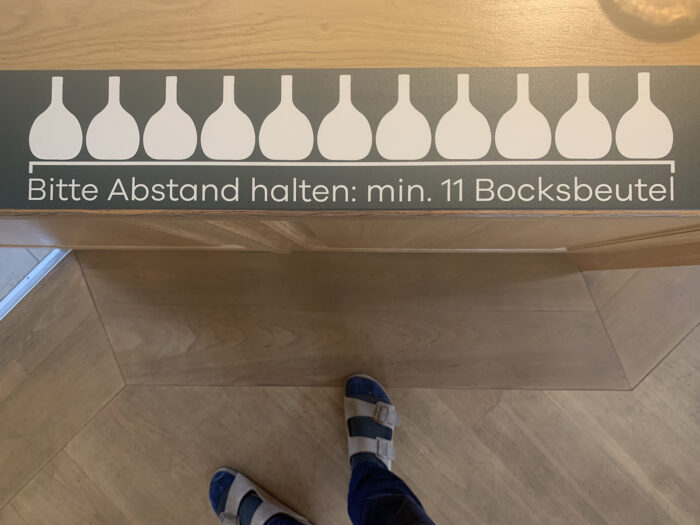
weather reports
Weather reports are both wildly complex and boring; I loathe every year having to try and responsibly cover something so varied and basically incomprehensible. That said, the parallels between 2020 and 2019 are fascinating, because there are so many. Both vintages were, all in all, hot and dry; the same run of show we’ve been seeing since 2018 (and following the warming trend since the 1990s) including an unusually early flowering, a warm intense growing season capped off by an unusually early start to the harvest.
The fascinating difference is really the turning of the weather through the harvest. While 2019 was a sunny, warm harvest, 2020 turned cooler after only a few days of harvest and the cool weather all but stopped the must weights from rising; it also kept the acids relatively high. Thus we have, in 2020, a vintage very much focused on the lighter side of the spectrum; ripeness just didn’t really go much above 90 Oechsle. This is a vintage of beautiful dry and gently off-dry wines, Kabinetts and lean, quivering Spätlesen. There are very few Auslesen and because of the cool weather and eventually the rain, there was almost no botrytis around, so there are nearly no grand ole dessert wines. (Photo above: Someone alert the CDC as to this useful public service message – to reduce COVID please remain at a minimum of 11 Bocksbeutels away from other people when indoors.)
general thoughts and highlights
For more in-depth, wine by wine, “bosc pear or mandarin orange” tasting-note coverage, please do check out Mosel Fine Wines. Jean and David, the two tasters and authors, are passionate, exceedingly knowledgeable and true champions of Mosel wine. Issue number 57, “2020 Vintage | Part 1” is free and available online now at their website.
Keep in mind their notes and vintage details are not relevant to other regions in Germany. I know this sounds obvious, but they are so comprehensive (regarding the Mosel) that it feels natural to take these impressions and apply them all over Germany. This would be a mistake, as I outline a bit below in my Nahe and Rheinhessen section.
Anyway, here are a few general themes to keep in mind when talking or thinking about or buying 2020.
Size matters.
For vintage 2020, again, size mattered: smaller estates simply had a huge advantage. It is impossible to overstate this basic fact. Given the rapidly changing weather during harvest, to say nothing of the labor issues due to COVID travel restrictions, smaller, more focused estates had a very serious advantage in 2020.
While the weather during the harvest was cool, keeping ripeness levels low, acids relatively high and botrytis at bay, there was intermittent rain and being able to quickly harvest specific blocks made a huge difference as per quality. Mosel Fine Wines mentions in their review a rather heterogenous lineup of basic, entry-level wines and even, in some cases, heterogenous quality levels of Kabinett. In both cases, they suggest this was due to growers having some more water-diluted grapes. I have to say, I noticed none of this and I can’t help but feel that our focus on smaller growers is the defining difference.
I would say some of the more basic entry-level wines are… well, more basic. In other words, while riper vintages often deliver kaleidoscopic, tour-de-force, entry-level wines (anyone who had Stein’s 2019 Blauschiefer Trocken or Weiser-Künstler’s 2019 Feinherb knows what I’m talking about), many of the estate wines in 2020 are lovely, but less searing, less vivid. They have a lower volume, which for me is a fair-enough expression of a more humbly proportioned vintage.
Strengths.
It’s challenging to pick out an easy narrative here. If the basic wines are a shade on the basic side and the Auslesen and above all but non-existent, I guess I’d say the strengths are everything in between?
I loved many of the dry wines as you run up the ripeness level. For purists, the Kabinett Trockens are bracing and fresh, saltier and more mineral than the riper, tangy, green-fruited 2019ers. Stein, Weiser-Künstler have beautiful examples; I tasted a 2020 Falkenstein Kabinett Trocken that I loved as well. Cellar these for the short term: 5-10 years.
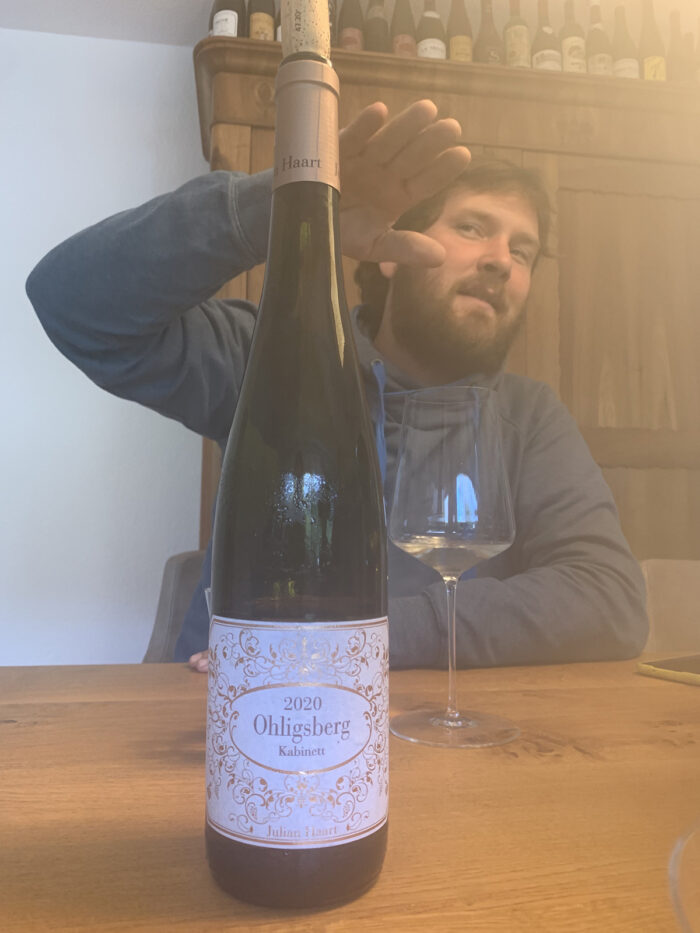 Julian Haart’s mid-level dry wines are genius and punch so far above their weight class that you have to be really, really not paying attention to notice how good these are. It is only a question of how quickly every bottle he makes will go cult. Yes, the top dry wines (and the Kabinett Alte Rebens) are worth the hunt, but it’s mildly amazing to me that bottlings that are just a shade fresher and clearer and will drink so much better young (and are half the price), sit on shelves, even if only for a moment. This is another part of the world I just don’t understand – add it to the long list.
Julian Haart’s mid-level dry wines are genius and punch so far above their weight class that you have to be really, really not paying attention to notice how good these are. It is only a question of how quickly every bottle he makes will go cult. Yes, the top dry wines (and the Kabinett Alte Rebens) are worth the hunt, but it’s mildly amazing to me that bottlings that are just a shade fresher and clearer and will drink so much better young (and are half the price), sit on shelves, even if only for a moment. This is another part of the world I just don’t understand – add it to the long list.
Young GGs are all but inscrutable as far as I’m concerned, but Lauer’s were clearer at this young state than any I’ve ever had. Let’s see where they go, but they could be absolutely stunning.
Many feinherbs are awesome, though I like them a bit more on the less-ripe side in 2020. Some of the bigger, “grander” feinherbs feel a bit too suave for my personal taste, though people smarter than I have said that they will take on more form and then, well, then we have that 2002, 2004 and 2008 thing.
Maybe, just maybe, the darlings (at least in the Mosel) are the Kabinetts – though I love, love, love this category, and 2020 delivered some haunting featherweights. At the very least, the few Kabinetts you can get from any of my producers, you should pounce on because they are angelic and, at least for the next 5-10+ years, will probably be friendlier than the 2019ers. Same list as above, in no particular order: Julian Haart, Weiser-Künstler, Stein, Vollenweider. If you can find the Kabinetts of the young grower Max Kilburg, pounce on these as well. (Pictured above: 1/2 of the Julian Haart Ohligsberg Kabinett “Alte Reben” allocation for the U.S. That’s a joke. Sort of.)
This sounds self-serving, and I guess in a way it is, but buy more than you need of the Kabinett. If there is one thing I could go back and re-do in my wine-buying career, it would have been to buy more Kabinett. And I bought a lot of Kabinett.
As Mosel Fine Wines has noted, the Spätlesen of the vintage are gorgeous; they have density and concentration, yet remain lighter than the Spätlesen we have gotten used to in the last decade plus. They are drinkable, “drinky” – you can crack a bottle open with food. You’ll be very, very happy.
Nahe and Rheinhessen
But let’s get out of the Mosel for a moment, because what’s true for the Mosel isn’t necessarily true for the Nahe and Rheinhessen. Which is to say, the Nahe and Rheinhessen 2020ers strike me as much more similar to 2019 than do the Mosel wines which, in general, have a more delicate touch as outlined.
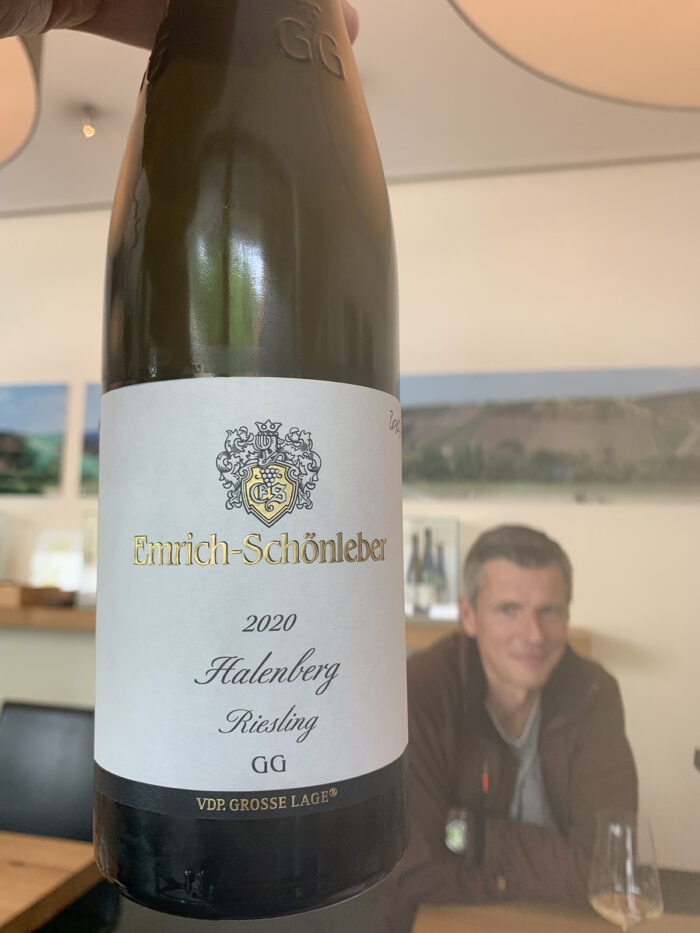 I tasted with both Frank Schönleber (Emrich-Schönleber, photographed to the left) and Tim Fröhlich (Schäfer-Fröhlich) and the wines have the same saturating, deep-cut, ultra-intense vibes as the 2019ers. Perhaps they are a touch, only the most delicate touch, leaner and fresher, which makes them all the more fascinating. In terms of the Nahe, at least as seen through the prism of these two geniuses, the 2020 Nahe wines may be just plain better than the 2019ers. Obviously time will tell, but either way they are damn good. The Nahe is in the sweet spot of late, it doth seem.
I tasted with both Frank Schönleber (Emrich-Schönleber, photographed to the left) and Tim Fröhlich (Schäfer-Fröhlich) and the wines have the same saturating, deep-cut, ultra-intense vibes as the 2019ers. Perhaps they are a touch, only the most delicate touch, leaner and fresher, which makes them all the more fascinating. In terms of the Nahe, at least as seen through the prism of these two geniuses, the 2020 Nahe wines may be just plain better than the 2019ers. Obviously time will tell, but either way they are damn good. The Nahe is in the sweet spot of late, it doth seem.
I didn’t taste all the much Riesling from the Rheinhessen, though if we can take the bit of Keller I’ve had and Florian Fauth’s collection (Seehof) as an example, then the Rheinhessen is also in great shape. The touch of restraint in 2020 shaped wines of that glycerine-rich density we all know and love, yet with truly beautiful clarity and acidity. As with the Nahe, it may just be that 2020 has a slight advantage when compared to 2019, at least for the shorter-term and for those that prize energy and lightness. Time will tell.
Keller is Keller; it hardly matters that I may like the 2020ers more than the 2019ers. They are both great, obviously. Yet, for me, Florian Fauth’s 2020ers are the best dry single-vineyard wines I’ve ever tasted at Seehof, even beating out his hallowed 2016ers. We’ll be bringing in his Kirchspiel, Morstein and Steingrube Grand Cru dry wines, if we can get them. So keep an eye out or email orders@vomboden.com
in conclusion: the 2002, 2004 and 2008 paradigm of “lightness and finesse”
I know you bought too many 2019ers, or maybe you just bought too much wine in general during the pandemic year of 2020. We all did; it was a tough year.
Yet, as the 2020ers quietly and politely come to market, I cautiously urge you to engage. Yes, be more curatorial, edit yourself.
And then buy more wine than you think you’ll need because these lighter and more finessed vintages, just won’t be coming around as much. By the time this sentence proves to be true, it’ll be too late. Those of you who have tried to back-fill with great 2004ers and 2008ers know exactly what I’m talking about.
If you have lived through the miscalculations of 2002, 2004 and 2008 (buying too much of the “great” vintages and then skipping the quieter vintages), don’t make this mistake again. We are likely to have more ripe vintages; it’s time to start honoring the ever-more-rare quality of restraint, the true genius of the first bottle at the table that’s empty.
THAT, is vintage 2020.
If you need any help, please just email: orders@vomboden.com We are here, ready, very much awake and in no way peacefully sleeping, wrapped in a wool blanket, with an old bottle of Egon Müller artfully placed in our loving arms.
